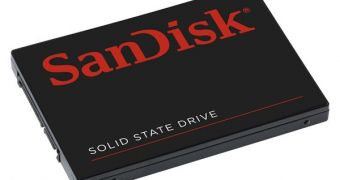Fresh from releasing not one but two new series of solid state drives, SanDisk has announced a partnership that will further extend its IP portfolio in NAND storage.
It looks like SanDisk has a full set of solid state drive caching technology now to call its own, more or less.
Having formed an alliance with Diskeeper, the company is now allowed to use its caching software in standalone products or SSD bundles.
The two IT players have formed an exclusive agreement to this effect, meaning that only SanDisk will get to license the Diskeeper ExpressCache and NowOn software products.
The applications boost system performance and boot time in dual-drive storage setups (SSD+HDD).
“The combination of Diskeeper’s industry-leading ExpressCache and NowOn software offerings with SanDisk’s broad and flexible client SSD solutions delivers the lowest-cost, smallest footprint implementation to meet Ultrabook requirements,” said Kevin Conley, SanDisk’s senior vice president and general manager, Client Storage Solutions.
“We are excited to add these software solutions to our portfolio for standalone and bundled opportunities in this rapidly growing market.”
The Diskeeper software will be used in everything from client and enterprise systems to mobile products.
Unfortunately, the details of the agreement, like payment conditions and such, have not been made public.
“We see our alliance with SanDisk as a critical driver to accelerate adoption of SSD computing applications,” said Jerry Baldwin, CEO of Diskeeper.
“The exceptional performance and endurance of SanDisk SSD’s paired with Diskeeper’s ExpressCache and NowOn products offer consumer OEM customers industry leading performance optimization for Ultrabooks and other computer platforms.”
For those who need a memory refresh, SSD caching is a method through which the capacity of an HDD is supplemented by the speed of an SSD.
While the HDD stores mostly everything, the SSD holds the system files and the data most often accessed, for quick access time. File copying is also done first on the SSD, after which the data is moved to the HDD through a background process. Throughout it all, the PC treats the two drives as a single partition.

 14 DAY TRIAL //
14 DAY TRIAL //